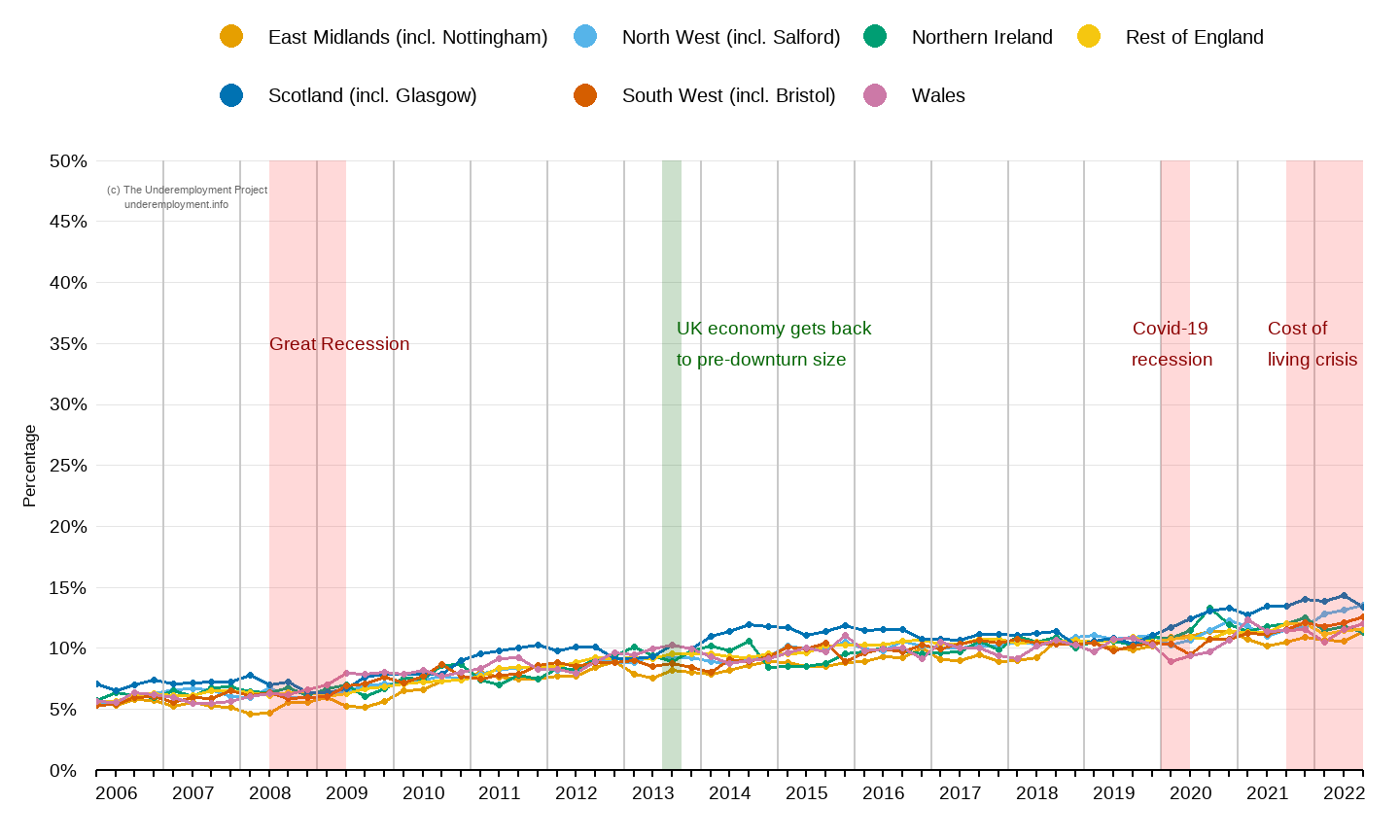2.7 Skills-related underemployment by region
Figure 2.8 shows that the mismatch between the skills held by workers and the requirements of their jobs increased steadily in all regions. Scotland (including Glasgow) shows a slightly higher proportion of overqualified workers in most periods between 2006 and 2022 while the East Midlands (including Nottingham) currently has one of the lowest levels of skills-related underemployment in the UK, but the regional gap is narrow.

FIGURE 2.8: The mismatch between skills and job requirements has increased steadily in all regions